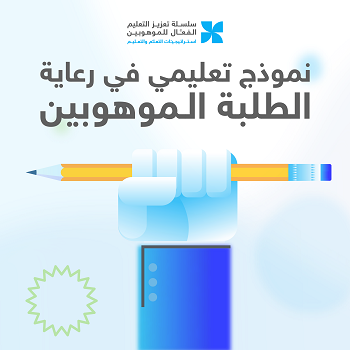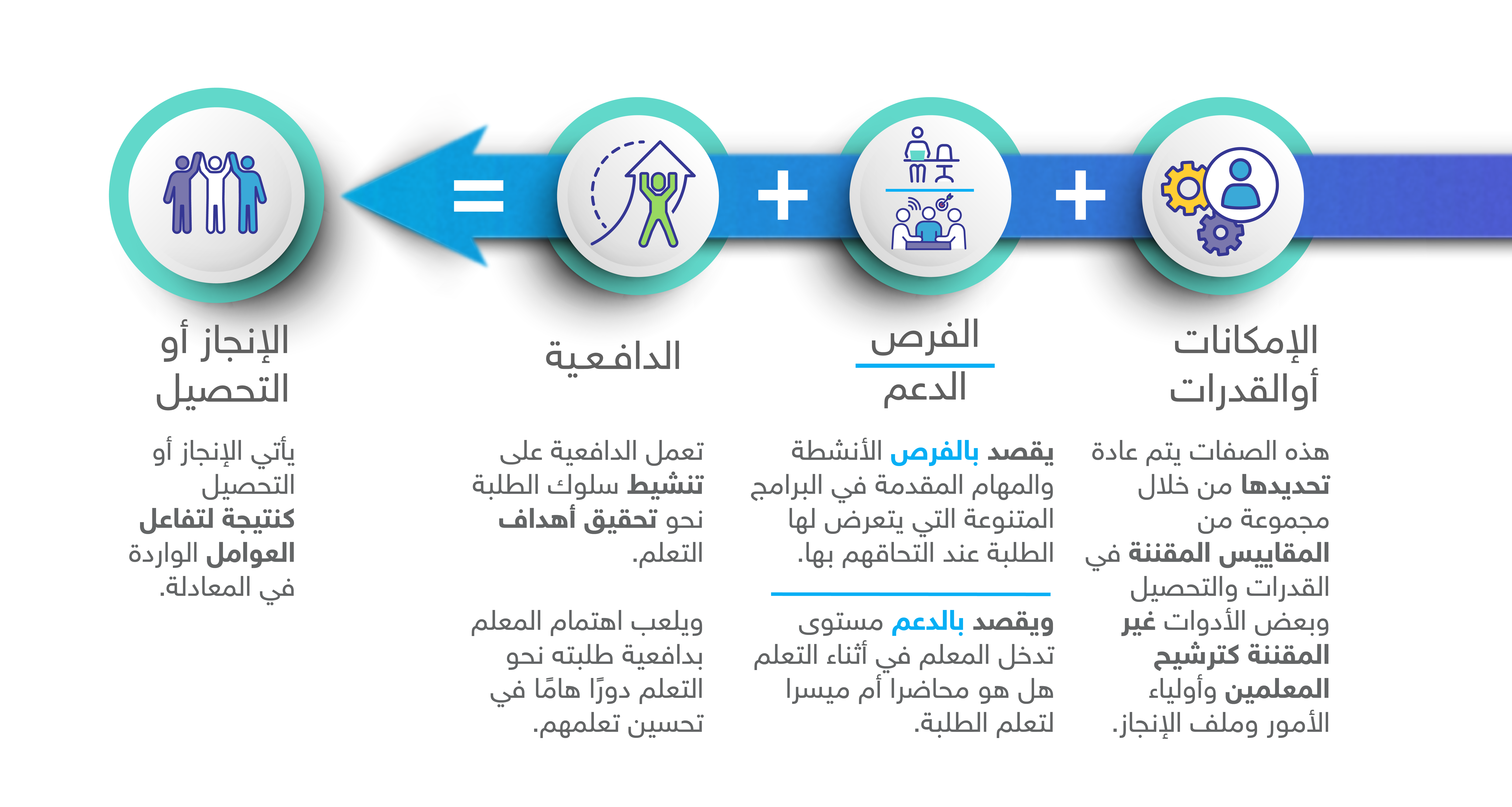Educational model for caring for gifted students

Program Design and Training Management
Talent
13
Mawhiba Series to Promote Effective Education for the Gifted
Learning and teaching strategies
The first article
Mawhiba plays a pioneering role in identifying and caring for gifted students. It designs diverse programs for different academic levels that include learning activities that challenge students’ abilities and meet their different needs and diverse interests. It contributes to stimulating their scientific curiosity and developing their abilities in research, discovery, finding creative solutions to problems and more unique achievements.
In this article, we will discuss an educational model for caring for gifted students (the Debra model) in the form of an equation consisting of several factors. Each factor will be explained, then how it affects the achievements of gifted students will be shown.

The first factor: capabilities or abilities.
Gifted students have several characteristics such as learning speed, the ability to infer, reason, generalize, process information, focus, think logically, persevere, be flexible, solve problems in creative ways, and link previous and future experiences. They also have a high scientific curiosity. These characteristics are usually determined through a set of standardized measures of abilities and achievement and some non-standardized tools such as teacher and parent nominations and achievement files.
Factor 2: Opportunities/Support.
Opportunities refer to the activities and tasks provided in the various programs that students are exposed to when they join them. They need more in-depth and complex educational activities and tasks that challenge their abilities and arouse their curiosity. The more the activities provided to gifted students challenge their abilities, the more the learning process will go in the right direction. Therefore, in order to learn better, it is necessary to avoid boring repetition and provide examples and tasks that are appropriate to the students’ abilities. Support refers to the level of teacher intervention during learning, whether as a lecturer or a facilitator of student learning.
The third factor: motivation to learn.
Motivation activates students' behavior towards achieving learning goals. The teacher's interest in his students' motivation towards learning plays an important role in improving their learning. There are two types of motivation: intrinsic and extrinsic. Intrinsic motivation refers to an internal force that motivates students to engage in academic activities because they are interested in learning and enjoy the learning process. Examples include a person practicing sports because he enjoys feeling energetic and active, and reading a book because he enjoys telling stories in it. While extrinsic motivation pushes students to engage in tasks for reasons related to an external reward. Extrinsic motivation does not work in the long term. Once the reward is removed, students lose their motivation, and it also leads to a decrease in the effectiveness of intrinsic motivation. Therefore, care must be taken to arouse their intrinsic motivation to enhance their learning.
The teacher can improve the level of motivation of his students by providing immediate feedback when possible about their learning progress, highlighting their knowledge and motivating them to achieve and expect success, and linking the knowledge and concepts he presents to their experiences so that they can realize the importance of what they have learned and make their learning meaningful. It is necessary to avoid using the word difficult to describe activities, tasks and assignments because this may not encourage students to continue and participate in the learning process.
Achievement or attainment.
Achievement or attainment comes as a result of the interaction of the factors included in the equation. Achievement is high when the degrees of the components of the equation are high. In the first component, potential, the gifted student comes with a certain level of abilities or potential that the teacher cannot interfere with. However, in order for the teacher to bring about a change in the students’ achievements by refining their talents and providing them with advanced knowledge and understanding in various fields and developing their higher mental skills, his focus is on the second factor, opportunities/support, and the third factor, motivation towards learning. They seek to expose students to activities that challenge their abilities and satisfy their different needs and diverse interests, with limited support and assistance from the teacher, so that students engage in the learning processes and have the greatest role in them, and the teacher’s role is to facilitate and guide them, providing assistance and support when necessary.
In order to obtain a high score on this component, the teacher needs to provide diverse learning opportunities that challenge the students’ abilities (numerator of the fraction) with limited support from the teacher, i.e. little intervention (denominator of the fraction). In this case, the result of dividing the numerator by the denominator is as large as possible. High abilities, opportunities provided, little support from the teacher, and high motivation towards learning produce high and distinguished achievements.
Did you benefit from the information provided on this page?
visitors liked this page
